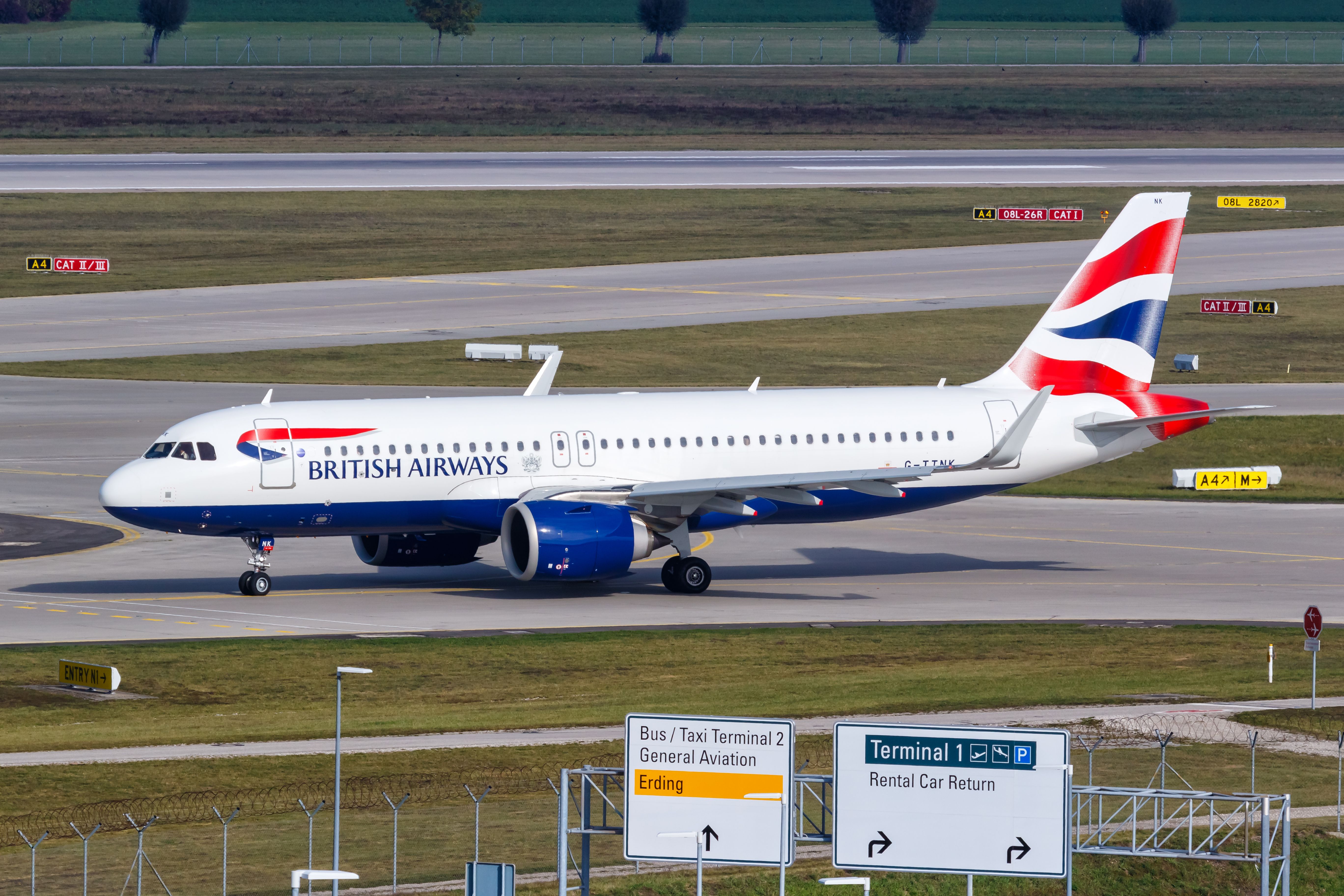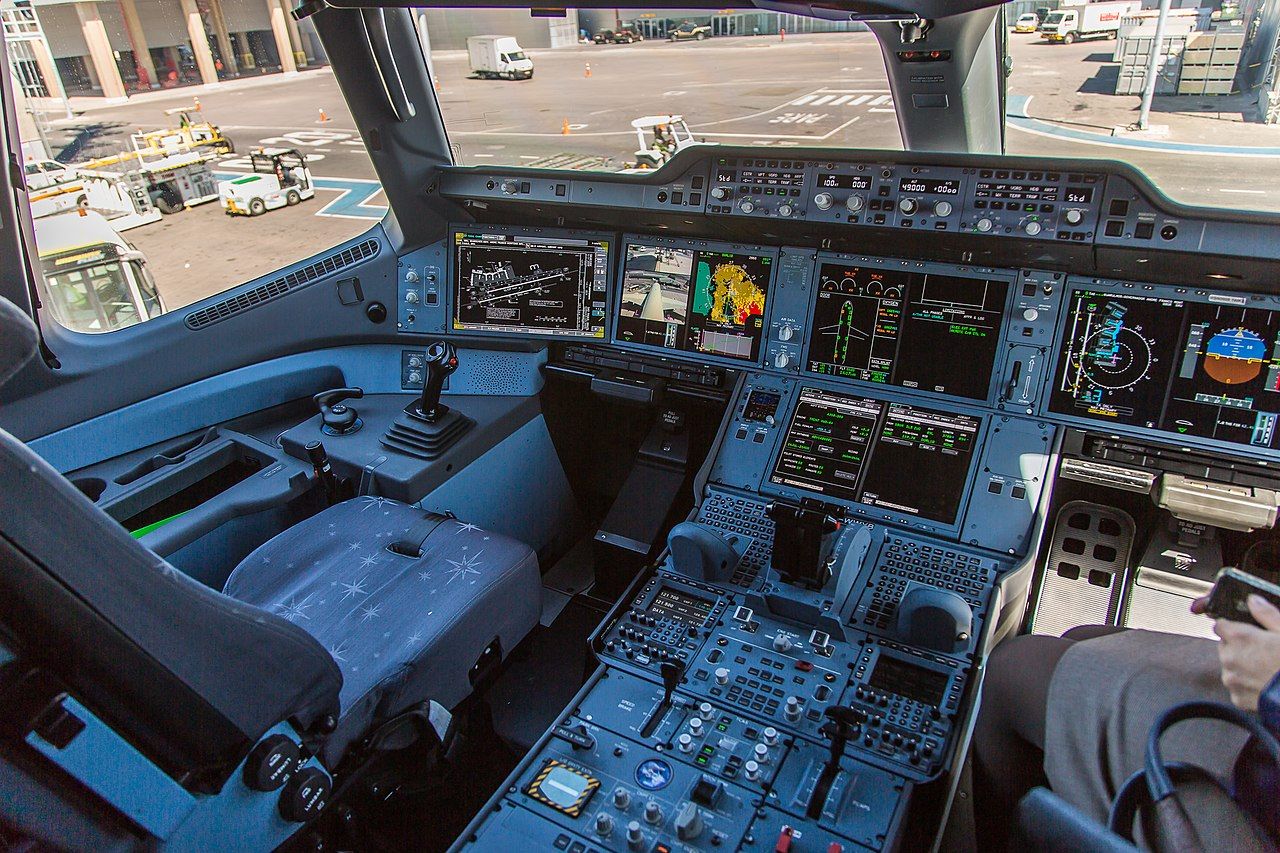In the absence of a tug, have you ever wondered how pilots navigate their aircraft while on the ground at an airport? While the aircraft's rudder, slats, and flaps will alter an aircraft's direction in the air, these won't be very effective when moving at a speed of 20 miles per hour. Let's find out how aircraft are steered when they're not in the air.
The short answer
In a nutshell, with wheels on the ground, an aircraft is steered with what is known as a "tiller." This device is found at the flight deck and is equivalent to the steering wheel of a car but is designed to be operated with one hand.
The tiller is almost always located on the outside edges/sides of the cockpit, just to the left of the left side stick or yoke and to the right of the right side stick or yoke.
Altogether, the tiller links to a hydraulic cog configuration, which pulls a rail over a cogwheel attached to the pillar of the front wheel. Subsequently, as the cog turns, the wheel rotates.
The tiller can be seen on the far left in the below image:
While it's unanimous that this is called the tiller, what it looks like varies depending on the aircraft. The tillers on some commercial jets are a curved hook shape and are more "handle-bar-like." Others are a half-moon shape, and others are pie-shaped.
Regardless of the shape, the function is the same, and rotating the tiller will steer the aircraft's front set of wheels left and right. This system will allow the aircraft to make very sharp turns and thus navigate the network of taxiways at any airport before take-off and after landing.
Ground handlers often control the steering during pushback with conventional tugs because pilots can't see what's behind them. Still, it's all controlled by the flight deck once the tug is disconnected.
Get the latest aviation news straight to your inbox: Sign up for our newsletters today.
The other answer
Aaron Johnson notes that the tiller is only present for large commercial aircraft. It can be a different story for smaller planes.
Speaking with the MIT School of Engineering, Johnson says the following:
“In some smaller aircraft, the pilot turns the nose wheel through the rudder pedals. But other smaller aircraft don’t have the hardware required to turn their wheels. So they either stay fixed straight or are free-swiveling, like the ones you see on shopping carts.”
In the case of these smaller aircraft, pilots have to use a technique known as differential braking, which according to MIT, works by applying the brakes to the wheel on one side of the plane. This causes it to pivot around the wheel and gives the pilot control over the aircraft's direction.
Additionally, if the airplane has at least two engines, one on each side, the pilot can use "differential throttling." This technique adds thrust to the engine on the side opposite the stopped wheel, allowing the airplane to turn even more easily.
Nonetheless, using the tiller at high speed (such as during takeoff) is likely to result in the nose wheel snapping off, with more disastrous consequences following that. When speeding down the runway, any adjustments to aircraft direction (likely to compensate for wind) will be made by adjusting the rudder.
Get all the latest aviation news right here on Simple Flying.
Moreover, after the aircraft is in the air, the rudder still supports the plane in making turns, even if the wheels are off the ground. Designers and manufacturers often have to be versatile with their applications.
What are your thoughts about how pilots steer when on the ground? What do you make of the overall factors involved? Let us know what you think in the comment section.
Source: MIT School of Engineering


